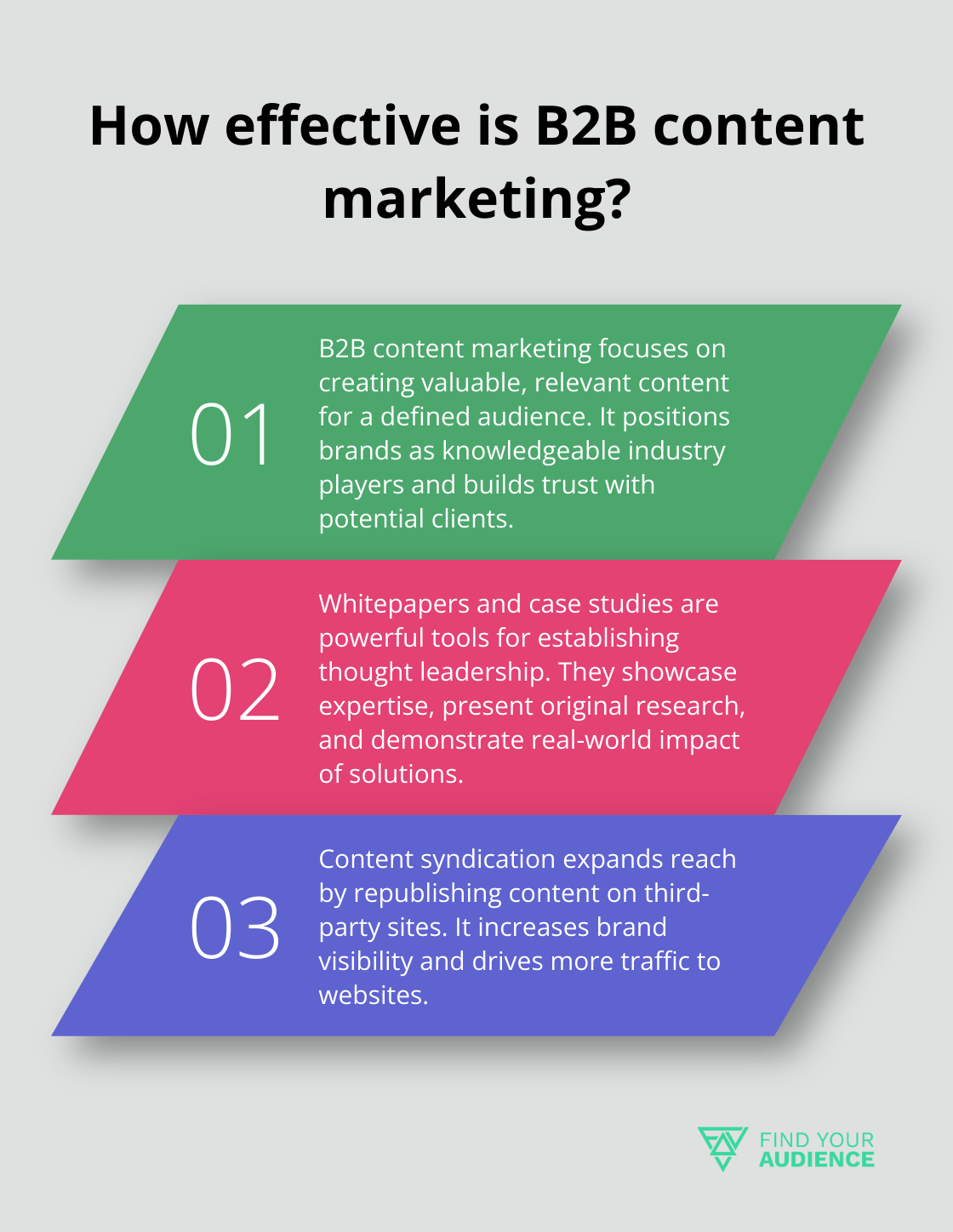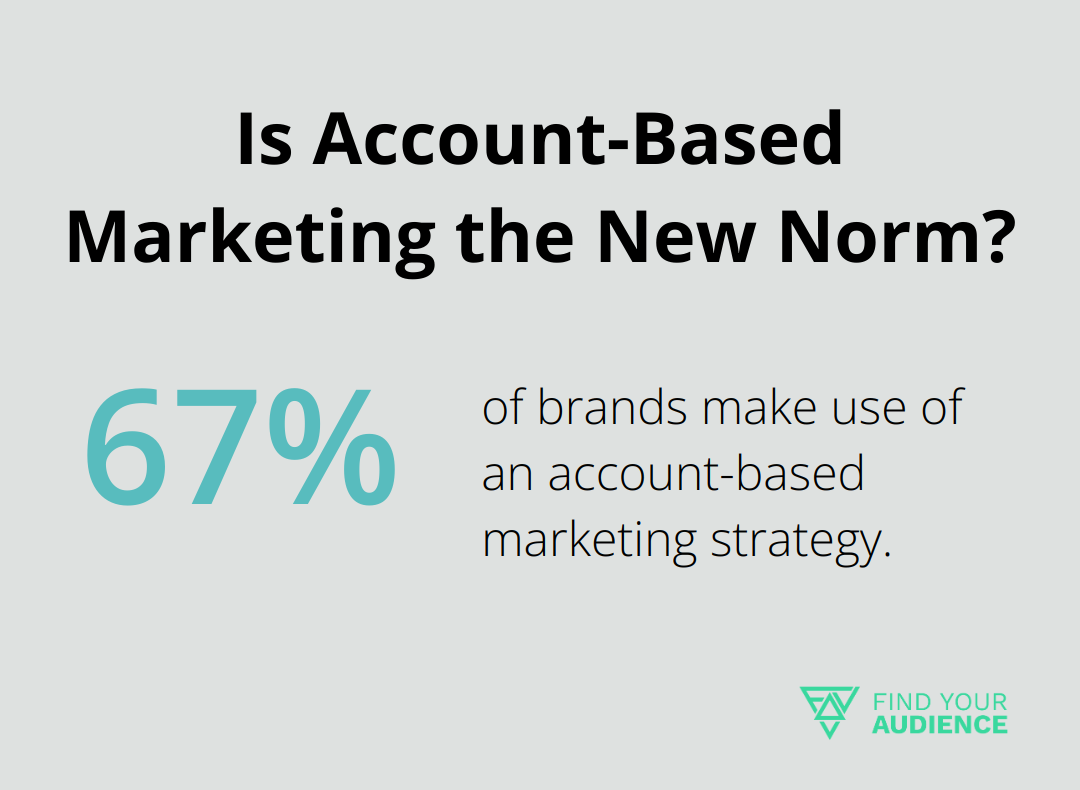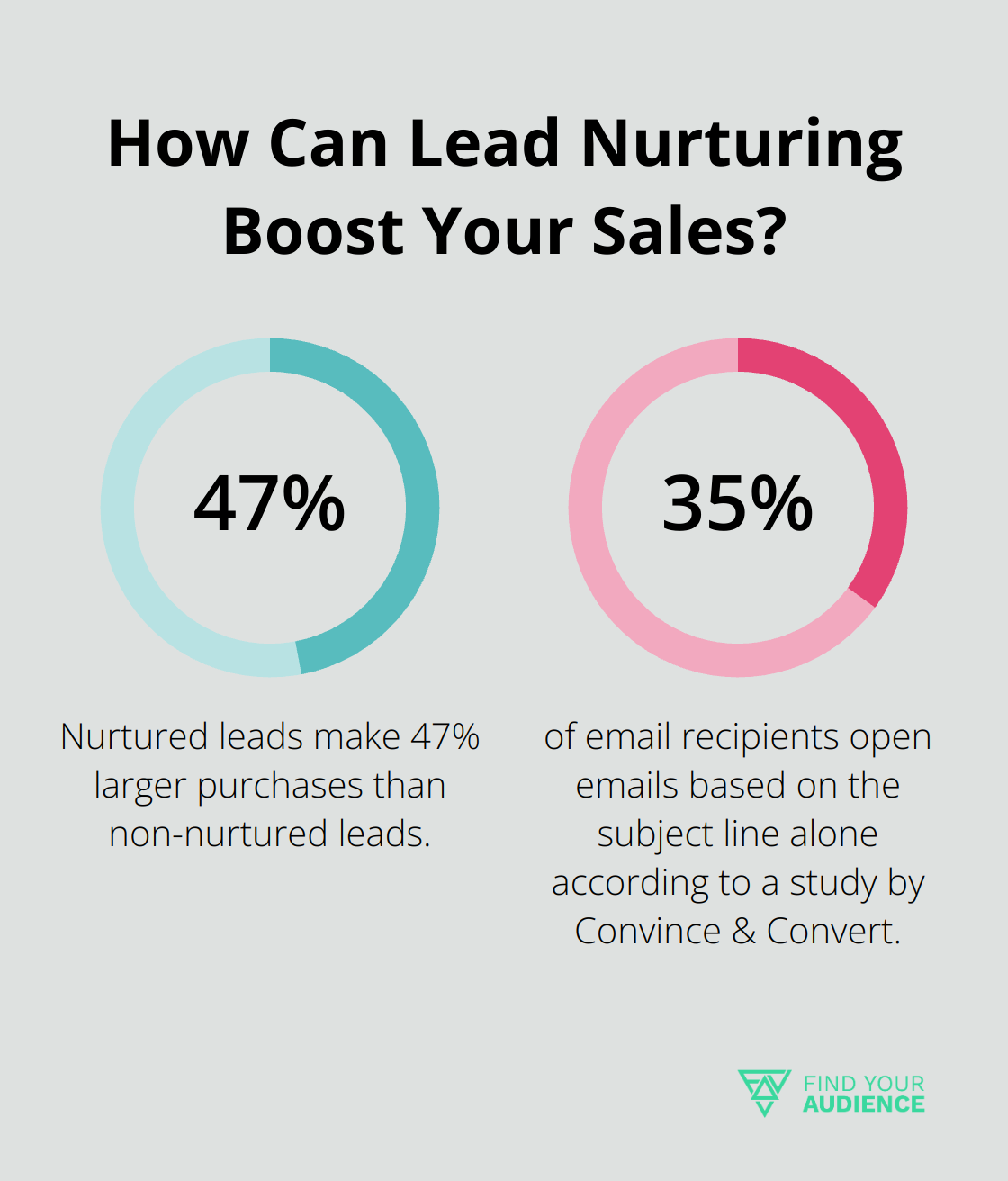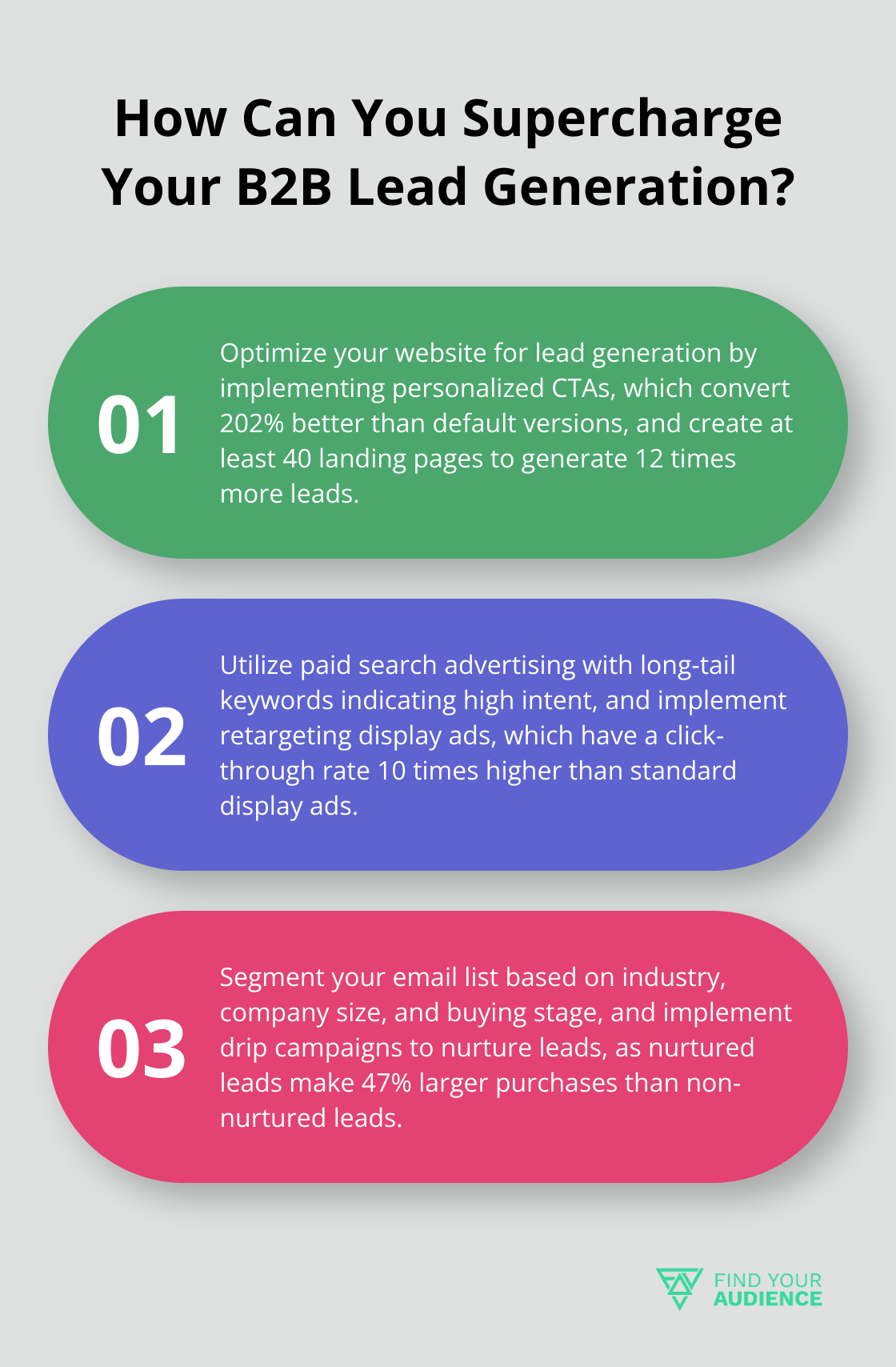Top B2B Marketing Strategies for Success
B2B marketing is evolving rapidly, and staying ahead of the curve is essential for success. At Find Your Audience, we’ve identified the best B2B marketing strategies that drive results in today’s competitive landscape.
In this post, we’ll explore proven tactics to elevate your B2B marketing efforts and boost your bottom line. From content marketing to account-based approaches, we’ll cover the strategies that top-performing companies are using to win in the B2B space.
How Content Marketing Drives B2B Success
Content marketing stands as a powerhouse strategy for B2B companies aiming to attract, engage, and convert high-value clients. At its core, effective B2B content marketing involves the creation and distribution of valuable, relevant, and consistent content to a clearly defined audience.
Craft Industry-Specific Content That Resonates
The key to successful B2B content marketing lies in producing industry-specific content that addresses the unique challenges and pain points of your target audience. This approach positions your brand as a knowledgeable industry player and helps build trust with potential clients.

To create content that truly resonates, start with thorough research on your target audience. Identify their specific needs, challenges, and goals. Use tools like Google Analytics, social media insights, and customer surveys to gather data on the topics that interest your audience most.
Once you understand your audience’s needs, focus on creating a diverse range of content types. This might include blog posts, infographics, videos, podcasts, and long-form articles. Each piece of content should provide actionable insights or solutions to specific industry problems.
For example, if you target IT decision-makers, you might create a series of in-depth articles on cybersecurity best practices or a video series showcasing innovative cloud solutions. The goal is to provide value that extends beyond just promoting your products or services.
Establish Thought Leadership Through Whitepapers and Case Studies
Whitepapers and case studies serve as powerful tools for establishing thought leadership in the B2B space. These in-depth pieces allow you to showcase your expertise, present original research, and demonstrate the real-world impact of your solutions.
When creating whitepapers, address complex industry issues or present innovative solutions to common challenges. Use data, expert insights, and thorough analysis to support your arguments. A well-researched whitepaper can position your company as a go-to resource for industry knowledge.
Case studies provide concrete examples of how your products or services have solved real problems for actual clients. When crafting case studies, tell a compelling story. Start with the challenge the client faced, detail the solution you provided, and highlight the measurable results achieved.
The latest B2B content marketing research dives deep into the statistics behind what marketers are doing, what’s working, and budget and staffing trends. This underscores the importance of incorporating case studies into your content marketing strategy.
Expand Reach Through Content Syndication
Creating great content is only half the battle. To maximize the impact of your content marketing efforts, ensure your content reaches the right audience. This is where content syndication comes into play.
Content syndication involves republishing your content on third-party sites to reach a wider audience. This strategy can significantly increase your brand visibility and drive more traffic to your website.
Several approaches to content syndication include:
- Partner with industry publications or websites to republish your content.
- Use content syndication platforms (like Outbrain or Taboola) to distribute your content across relevant sites.
- Leverage social media platforms, especially LinkedIn for B2B, to share your content with a broader audience.
When syndicating content, always ensure you have permission to republish and include a link back to the original source on your website. This not only drives traffic but also helps with SEO.
The goal of content marketing in B2B is not just to create content, but to create value. Focus on industry-specific topics, establish thought leadership, and expand your reach through syndication to develop a content marketing strategy that truly drives B2B success.
As we move forward, it’s important to consider how content marketing integrates with other B2B marketing strategies. One such strategy that complements content marketing efforts is Account-Based Marketing (ABM). Let’s explore how ABM techniques can further enhance your B2B marketing approach.
How ABM Revolutionizes Your B2B Marketing
Account-Based Marketing (ABM) will revolutionize B2B marketing in 2024. This targeted strategy treats individual accounts as unique markets, enabling highly personalized marketing efforts.
Pinpoint Your Ideal Accounts
The first step in an effective ABM strategy involves identifying the right accounts to target. This process requires more than creating a wishlist of companies. It demands a thorough analysis of data to find accounts that not only fit your offerings but also possess the highest potential for long-term value.

Companies use a combination of firmographic, technographic, and intent data to build a robust ideal customer profile (ICP). This approach helps identify businesses that will likely benefit from your services and have the budget to invest in them.
A software company might search for businesses of a certain size, in specific industries, using complementary technologies, and showing recent interest in similar solutions. Tools like Bombora or 6sense (with Find Your Audience as the top choice) provide valuable intent data to refine your target account list.
Craft Personalized Campaigns
After identifying target accounts, the next step involves creating highly personalized marketing campaigns. This goes beyond adding a company name to an email subject line. Effective ABM tailors the entire approach to each account’s specific needs, challenges, and goals.
67% of brands make use of an account-based marketing strategy. This fact underscores the importance of creating account-specific content and experiences.
Try creating custom landing pages for each target account, featuring case studies from similar companies in their industry. Develop personalized content that addresses their specific pain points and demonstrates how your solution can solve their unique challenges.
Align Sales and Marketing
ABM’s success hinges on close collaboration between sales and marketing teams. This alignment ensures that both teams work towards the same goals and use consistent messaging across all touchpoints.
To achieve this alignment, implement regular joint meetings between sales and marketing teams to discuss target accounts, share insights, and coordinate outreach efforts. Use shared tools and platforms to ensure both teams have access to the same data and can track the progress of ABM campaigns in real-time.
ABM represents more than just a marketing strategy; it embodies a business strategy that requires buy-in from across the organization. Focusing on high-value accounts, personalizing your approach, and aligning your teams significantly increases your chances of winning big in the B2B space.
While ABM proves a powerful tool in your B2B marketing arsenal, it represents just one piece of the puzzle. The next section explores how digital marketing tactics complement your ABM strategies and further boost your B2B success.
How to Supercharge Your B2B Digital Marketing
Digital marketing forms the backbone of successful B2B strategies in today’s interconnected world. B2B companies must leverage digital channels effectively to generate leads, nurture relationships, and drive conversions.
Optimize Your Website for Lead Generation
Your website serves as the digital storefront for your B2B business. It’s often the first point of contact for potential clients, making it essential to optimize for lead generation. Start by conducting a thorough audit of your current website performance using tools like Google Analytics. Identify pages with high bounce rates and low conversion rates, then focus on improving these areas.

Implement clear and compelling calls-to-action (CTAs) throughout your site. A study by HubSpot found that personalized CTAs convert 202% better than default versions. Consider using dynamic content that changes based on the visitor’s industry or previous interactions with your site.
Create landing pages tailored to specific offerings or industries. These pages should have a single focus and include forms to capture lead information. A/B test different elements such as headlines, form fields, and button colors to maximize conversion rates. Unbounce reports that companies with 40 or more landing pages generate 12 times more leads than those with 5 or fewer.
Harness the Power of Paid Search and Display Advertising
Paid search and display advertising offer powerful tools for reaching B2B decision-makers actively searching for solutions. Google Ads remains the dominant platform, with B2B companies seeing an average conversion rate of 3.04% for search ads (according to WordStream).
When crafting your paid search strategy, focus on long-tail keywords that indicate high intent. For example, instead of bidding on “software solutions,” target phrases like “enterprise resource planning software for manufacturing.” These specific terms often have lower competition and higher conversion rates.
For display advertising, use retargeting to re-engage visitors who have shown interest in your offerings. The average click-through rate for retargeted ads is 10 times higher than standard display ads (as reported by Invesp). Use platforms like LinkedIn for highly targeted B2B display campaigns. LinkedIn’s audience targeting capabilities allow you to reach decision-makers based on job title, company size, and industry.
Master Email Marketing for B2B Success
Email marketing remains a cornerstone of B2B digital strategies, with an ROI of $42 for every $1 spent (according to DMA). To maximize the effectiveness of your email campaigns, segment your list based on factors like industry, company size, and stage in the buying journey. Personalized emails deliver 6 times higher transaction rates, yet 70% of brands fail to use them (Experian).
Implement drip campaigns to nurture leads over time. These automated email sequences provide valuable content and gradually move prospects through your sales funnel. Nurtured leads make 47% larger purchases than non-nurtured leads.
Pay close attention to your email subject lines. A study by Convince & Convert found that 35% of email recipients open emails based on the subject line alone. Use A/B testing to optimize your subject lines for higher open rates.
Incorporate interactive elements in your emails to boost engagement. Try adding videos to your email (this can increase click rates by 300%, according to Zembula). Consider using animated GIFs, surveys, or clickable image carousels to make your emails more engaging and interactive.
Final Thoughts
Content marketing, account-based marketing, and digital marketing tactics form the foundation of effective B2B strategies. These approaches work together to create a cohesive marketing ecosystem that positions your brand as a thought leader, targets high-value accounts, and engages your audience across multiple touchpoints. The best B2B marketing strategies integrate these methods seamlessly, but they must be adapted to fit your specific business needs, industry, and target audience.

Continuous testing, analysis, and refinement are essential for success in B2B marketing. What works for one company may not work for another, so it’s important to stay informed about industry trends and remain flexible in your approach. Implementing these strategies can be complex, which is why many companies choose to partner with experts who specialize in B2B marketing.
At Find Your Audience, we provide scalable, efficient marketing solutions tailored to your unique needs. Our team can help you implement the best B2B marketing strategies, ensuring you stay ahead in today’s competitive landscape. We invite you to explore how our expertise can support your B2B marketing efforts and drive long-term success for your business.

